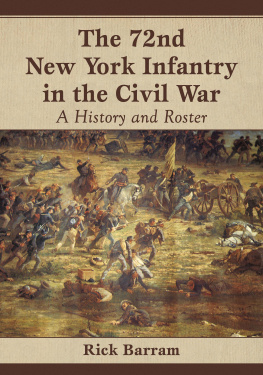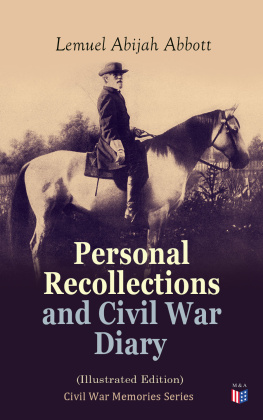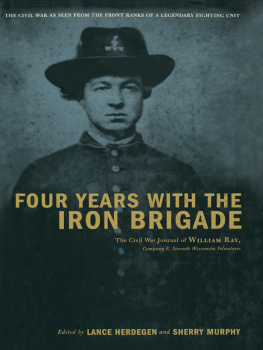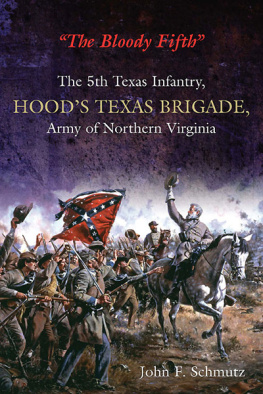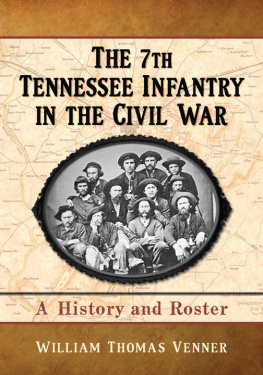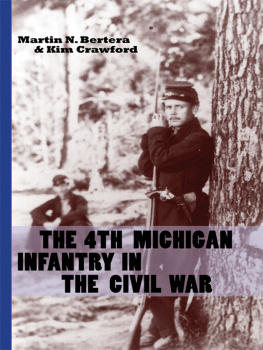
The 72nd New York Infantry in the Civil War
A History and Roster
RICK BARRAM

McFarland & Company, Inc., Publishers
Jefferson, North Carolina
LIBRARY OF CONGRESS CATALOGUING DATA ARE AVAILABLE
BRITISH LIBRARY CATALOGUING DATA ARE AVAILABLE
e-ISBN: 978-1-4766-1419-9
2014 Rick Barram. All rights reserved
No part of this book may be reproduced or transmitted in any form or by any means, electronic or mechanical, including photocopying or recording, or by any information storage and retrieval system, without permission in writing from the publisher.
On the cover: artwork Union Soldiers Charging at Gettysburg, 1881, Paul Philippoteaux 2014 PicturesNOW
McFarland & Company, Inc., Publishers
Box 611, Jefferson, North Carolina 28640
www.mcfarlandpub.com
Acknowledgments
Among those who deserve thanks for getting this book to completion is one of the old boys, an original member of company B, Henri LeFevre-Brown, whose drive helped to establish the 72nds veterans association, leading to the creation of the first comprehensive regimental history within all of the Excelsior Brigade regiments. The 72nd New York Infantry in the Civil War: A History and Roster was conceived under the mandate that unless it could go substantially beyond his work in scope, it wasnt worth pursuing. Thank you, Henri, for giving us a place to start.
Going beyond Browns work would not have been possible without the four major letter collections that made this story possible. So I offer my deepest and profound thanks to Diana Firth, who way back in 1999 sent me her collection of letters written by James Dean. James Dean joined the 72nd just before the fight at Fredericksburg, and his 70 or so letters provided the first look into the regiment at a level deeper than what Brown had provided. The letters of Emerson F. Merrell, which allowed us a look at the more cynical side of soldiering, were used with the permission of Samuel Sandoli, to whom I am very grateful. The letters published in the Fredonia Censor written by Arthur McKinstry, which offered such an intimate look at the early stages of the war, were provided by the Barker Historical Museum, and I wish to especially thank Douglas Sheppard, a volunteer with the museum, for his personal efforts to locate and send me the McKinstry articles. Next, my fellow historian Phil Palin, who for the past 15 years has been sending me any number of bits and pieces of 72nd lore from the Gowanda Historical Society along with pieces from other historical societies throughout western New York. Phil provided the collection of Hiram Stoddard letters, which presented such tender and poignant insight into the life of a Civil War soldier.
My good friend Mark Richardson probably read more versions of this book than anyone; without his encouragement this project probably would not have been undertaken. His knowledge of the regiment and of Civil War history was critical in shaping this book. Mark also brought an engineers sensibility to his editing of the piece, pointing out any inconsistencies in movements, directions, terrain, and troop dispositions or speaking up when things werent quite as clear as they should be.
A huge thank-you to another friend, Ginger Geiger, district librarian for Gateway Unified School District, for her time spent on this work. Ginger brought a valuable blend of grammar knowledge, understanding of nonfiction writing, love of history, and patience to this project, which stretched over years. Her input helped keep the tone and voice of this piece on track during the long process of writing, editing, and rewriting.
Elizabeth Fannin came to this project late; I came to know her after she joined our reenacting group and after much of the early writing on this book was finished. Her passion for history along with her deep and critical knowledge of editing and the citation process has allowed this book to move forward in a way that otherwise might have taken months longer.
There are two important others for whom I owe my thanks and whose creativity can be seen in these pages. My son, Kyle Barram, helped me to see the potential of the chapters scenes, keeping this work the action-adventure story I intended and not merely a staid recounting of events. And heres to my father, Bob Barram, who read my pages with enthusiasm, despite only a general knowledge of the subject matter. Though less concerned about the great movements of armies and their generals, he championed those parts of the work that focused on the little guys, the private soldiers, whose blood and heartache formed the tragic cornerstone of this war and the 72nds story. His input served as a check when the writing became too loaded with jargon or obscure military references, keeping the piece more accessible to the average reader.
On the technical side of things, my thanks go out to my friend Patrick Parsons, whose computer and map making skills helped to create the maps for this work. Maps are especially critical to the success of most historical works and especially to military histories when mere words cannot do the scope of the action justice.
Another deep thanks to two of my student assistants at Central Valley High School. Robert and Shyla both did yeoman service in compiling and editing the roster portion of this work, a job that was both demanding and tedious. Thanks, guys.
Next Id like to acknowledge four writers whose work, although not all in the field of Civil War history, inspired me to find this works voice. James Hornfischers books about World War II naval action paint vivid accounts of individuals set against momentous events. The exciting writing contained within his books set a kind of de facto standard for many of the battle scenes in this work. By asking whether it was Hornfischeresque enough, my readers and I knew what was expected. The vivid and action driven work of Rick Atkinson, another World War II writer, contained a number of literary conventions that helped to draw me in as reader by giving the story a personal and often humorous flair. I hope I prove a worthy disciple of these conventions in my writing. Among Civil War writers is Gordon Rhea, whose four-piece work on the Overland Campaign demonstrated how to flawlessly flow the action between all levels of command, from company, through brigade and divisional and beyond. Finally, John Ferlings work on the American Revolutionary War helped to unlock a problem within my journalists mind: the question of dealing with an incomplete historical record. Ferlings work demonstrated for me how, despite small gaps in direct accounts, the writer could seamlessly move the story along using reasonable speculation or references from other common occurrences of the era. Using techniques learned from all of these authors, I hope this book reads more like a novel than a history text.
Finally, my thanks to all my friends within the hobby of Civil War reenacting and the modern recreation of the 72nd New York, whose interest and enthusiasm for history proved an inexhaustible source of energy and inspiration. By embracing the past and keeping alive the spirits of the Old Boys of 61, they helped bring the sights, sounds, and smells of the campaign to life and provided me a palpable context for the story of the 72nd.
Introduction
By the summer of 65 practically all who had served with the 72nd New York Infantry were back home. A few had been promoted to positions that kept them away, a few more still lingered in northern hospitals, but for those who had survived, the war was now memory. Most carried some kind of mark indicating their service: scars from a cut or burn, a missing chunk of flesh, a twisted finger, a limp, something. For others the scars were unseen. Returning veterans sometimes slept on floors for months, unused to the comfort of a bed; others kept shoes positioned in every room for fear of being without; still others woke screaming in the dead of night. For all it was a time they would never forget.
Next page
